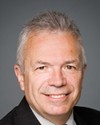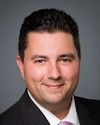Thank you.
Mr. Chairman and members of the committee, thank you for giving me the opportunity to speak to you today about the importance and benefits of the inclusion of sustainable agriculture as an equal partner in the exciting reality that is Rouge national urban park.
The creation of the Rouge national urban park is something very important to me, as my wife and I have lived and worked in the federal portion of the land designated to become park since 1985. In fact, my Reesor family has lived and farmed in the current park area since 1804, when they emigrated from Pennsylvania in search of good farmland and good government and settled in the Rouge area.
It is said that my predecessors, on arrival to the area in their quest for good farmland, looked for stands of black walnut trees, which were a sign of productive agricultural soil. My park farm must indeed be productive soil, as walnut trees grow very quickly anywhere they are planted around my farm.
I’ve chosen some photographs to show you while I speak today. They were all taken on land that I farm within the boundaries of the park. I hope they give you a glimpse of the existing vibrant agricultural preserve within this urban park.
When I was a child, my family made a weekly trip into Scarborough every Sunday, down Warden Avenue to church, from our farm in Markham, Ontario. The city at that point began at Finch Avenue, about 13 kilometres from our home. Over the years, the beginning line of where rural land ends and developed land begins has gradually crept north, destroying excellent farmland. Currently, that dividing line between urban and rural begins only three kilometres from my childhood home.
Urbanization in the region has progressed at an alarming rate, I will say, and if this rate of loss continues over time, virtually all of Markham's productive farmland will be lost in my lifetime. Who will bother to preserve land to produce food when it can be sold to develop for tens of millions of dollars?
Back in 1972, however, just to the east of where I grew up, the federal government expropriated about 18,000 acres of farmland for a new Toronto international airport. Over the years since then, while private landholders were busy developing land in west Markham, the land in east Markham was inadvertently being held in a virtual farmland trust by the federal government for the eventual creation of a new airport.
Currently, however, it has been recognized that some of the federally expropriated land is now surplus to an airport, giving the Rouge national urban park an incredible opportunity to preserve valuable food-producing land close to the city for generations to come.
Productive food-producing land is a valuable natural resource, just as a Carolinian forest or wetland is a valuable natural resource. The founders of the former Rouge Park had a vision for a property, a park, that protected nature and gave no real protection or encouragement to food-producing land, but they ran into obstacles. Unable to fulfill the dream for various reasons, they came to Parks Canada as the logical next step to help them implement their vision.
I am very pleased that our park system, in their draft management plan, has shown their intention and commitment to sustainable food production in this exciting new type of park. If the federal park system doesn't intentionally protect the natural resource of productive food-producing land, who will?
There are few places in a city where a person can get a view beyond simply down the street. Only open space can provide a vista, and agricultural fields provide an excellent opportunity for a park visitor to see the bigger picture, to have a view, to see beyond the forest and the trees, to see a sunrise or a sunset over an expanse of land, and to actually see the amazing natural and cultural heritage of the park.
Although forested land is beautiful and necessary in a park setting, I don’t believe that the value of open agricultural space should be diminished as an important ingredient in a park visitor's appreciation of the outdoors. Agriculture's open spaces can be vital to the park's overall success.
As a farmer, I am asking myself difficult questions within the new Rouge national urban park reality, recognizing that the status quo of food production in a park must change in some circumstances. Will trail development through agricultural land, perhaps through my fields, take place? Will I be asked by the park, for example, to identify the least productive 5% of my leased agricultural land for potential wetland creation or other park purposes? Will I be required to submit a provincial environmental farm plan prior to being granted a lease in the park, or could I be asked to identify an appropriate site on some of my leased park land for a community garden?
To each of these questions, if I were asked, I would heartily say “yes”. I am willing and wanting to work with park authorities to enhance a viable, modern, and environmentally sustainable food-producing systems in this urban park.
Since the creation of the park, with one of its stated purposes being to promote a vibrant farming community, realities have and will continue to change for all of us who have an interest in the Rouge lands. For every farmer, leaseholder, and Rouge River advocacy group, and individual, for all of us, it's going to change.
There is a vision of a near urban park equally embracing nature, food production, and our cultural heritage. I would implore each of us to work diligently to overcome stumbling blocks to the creation of this park for the common good. The park is now in the hands of our respected national park service, and I believe our collective job currently is to support them in their work to create a model that can be an example urban park for the rest of the country and the world.
Sincerely, all the best to you and your colleagues as you work together to fulfill the vision of the park.








